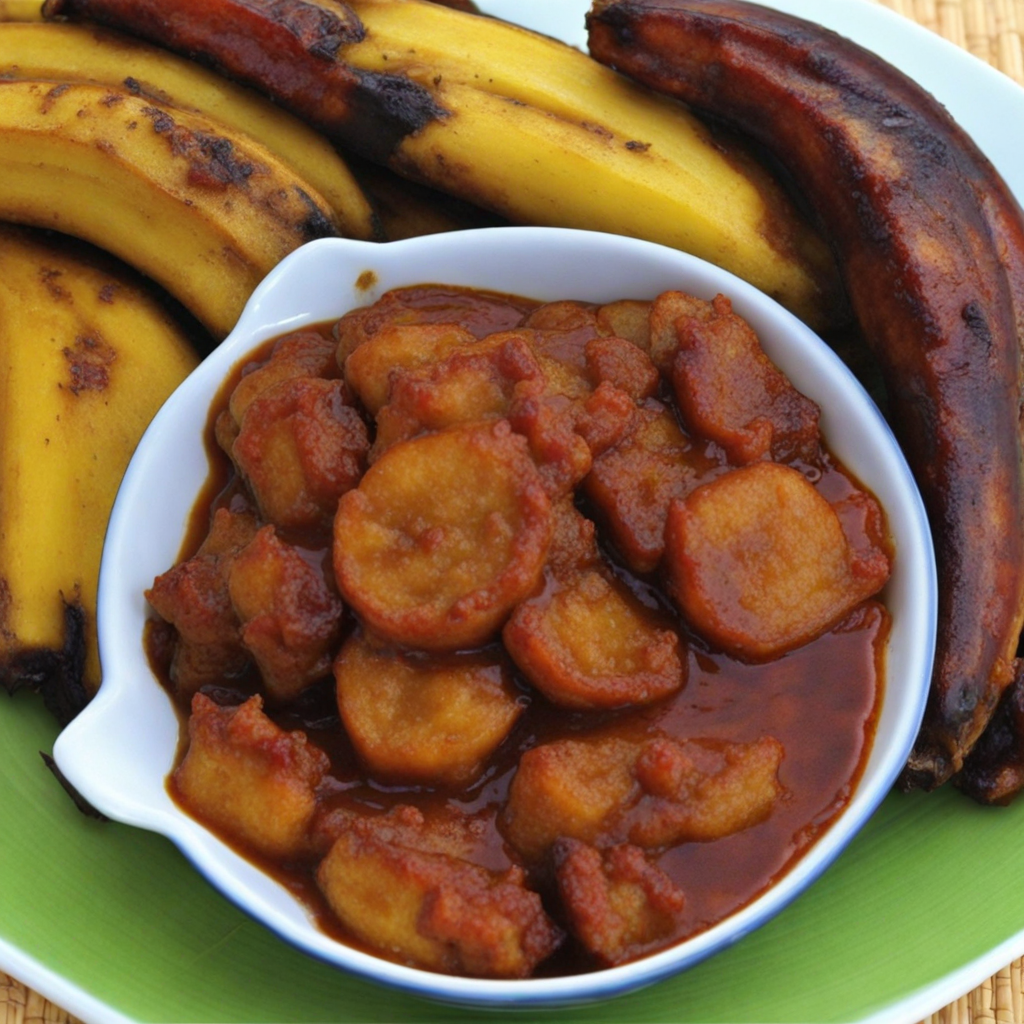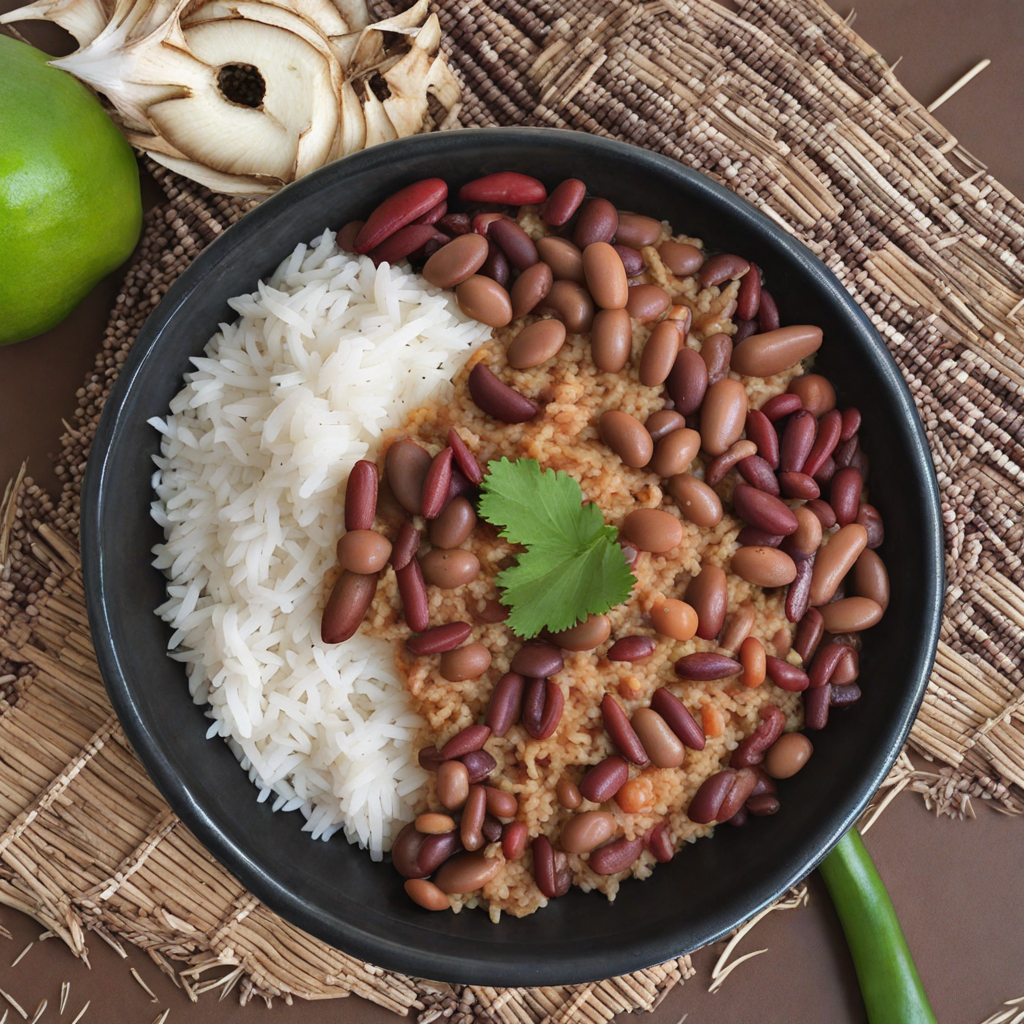Mayi Moulen
Mayi Moulen, a traditional Haitian dish, is a delightful blend of flavors that showcases the country's rich culinary heritage. At its core, this dish features finely ground cornmeal, which is skillfully blended with water to create a smooth, thick batter. The cornmeal is often infused with a hint of salt, giving it a savory taste that perfectly complements various accompaniments. The texture is both creamy and hearty, making it a comforting staple in Haitian households. Cooking Mayi Moulen involves steaming or boiling the cornmeal mixture until it reaches a firm yet tender consistency. The result is a versatile dish that can be enjoyed in numerous ways. It is commonly served as a side dish, accompanied by flavorful stews, spicy sauces, or sautéed vegetables. The subtle sweetness of the cornmeal pairs beautifully with the bold spices typically found in Haitian cuisine, making each bite an explosion of taste. Mayi Moulen is not just a meal; it's a cultural experience. Often enjoyed during family gatherings or festive occasions, this dish brings people together, embodying the warmth and hospitality of Haitian culture. As you explore this unique flavor, you'll discover how Mayi Moulen encapsulates the spirit of Haiti, inviting you to savor every mouthful and appreciate the vibrant traditions that shape its culinary landscape.
How It Became This Dish
The Rich History of Mayi Moulen: A Culinary Gem of Haiti Introduction Mayi Moulen, a traditional Haitian dish made from cornmeal, is not just a staple food but a symbol of resilience and cultural identity. This dish, often served as a side or base for various meals, is deeply rooted in the agricultural practices and socio-political history of Haiti. By exploring its origins, cultural significance, and the evolution of Mayi Moulen over time, we can gain insight into the fabric of Haitian society and its culinary heritage. Origins: A Cornucopia of Culture The story of Mayi Moulen begins with corn, a crop that has been cultivated in the Americas for thousands of years. Indigenous peoples, particularly the Taíno, were among the first to grow corn, which was a staple in their diet. When the Spanish arrived in the late 15th century, they encountered corn in various forms, including as a flour. This introduction laid the foundation for the development of maize-based dishes throughout the Caribbean and eventually in Haiti. Following the arrival of African slaves in the 17th and 18th centuries, the culinary landscape of Haiti began to change significantly. Enslaved Africans brought with them their culinary practices and preferences, which melded with the indigenous and European influences. This fusion created a unique gastronomic identity that would shape the way food was prepared and consumed in Haiti. Mayi Moulen emerged as a reflection of this blend, as cornmeal became a primary ingredient in the diets of both the enslaved population and the colonial settlers. Cultural Significance: A Symbol of Resilience Mayi Moulen is more than just food; it is a symbol of survival and cultural resilience. Corn, as a crop, thrives in the diverse climates of Haiti, making it a reliable source of sustenance for the local population. The preparation of Mayi Moulen is often communal, with families and communities coming together to grind corn, mix ingredients, and cook the dish. This act of collaboration fosters a sense of community and solidarity, which has been vital throughout Haiti's tumultuous history, characterized by colonial oppression, slavery, and political upheaval. The dish is often served during significant cultural events and celebrations, including weddings, religious ceremonies, and national holidays. It is commonly paired with various stews and grilled meats, enhancing the communal dining experience. Mayi Moulen embodies the spirit of hospitality and sharing among Haitians, reinforcing the importance of family and community ties. Development Over Time: From Tradition to Modernity As Haiti transitioned through various political and social changes, the preparation and consumption of Mayi Moulen evolved. In the early 20th century, as urbanization began to take hold, the accessibility of processed foods and changes in lifestyles altered traditional cooking practices. However, Mayi Moulen remained a beloved dish, often revisited as a source of nostalgia for many Haitians living in cities or abroad. With the rise of global interest in Haitian culture, particularly in the late 20th and early 21st centuries, Mayi Moulen has gained recognition beyond its geographical boundaries. Chefs and food enthusiasts have begun to embrace Haitian cuisine, seeking to celebrate its depth and diversity. This newfound interest has led to a revival of traditional cooking methods and the promotion of local ingredients, which has contributed to a renewed appreciation for Mayi Moulen. In contemporary Haiti, the dish is often prepared with variations that reflect personal and regional preferences. While the traditional version remains popular, modern interpretations may include the addition of spices, herbs, or even cheese to enhance flavor. Additionally, as Haitians migrate and establish communities around the world, Mayi Moulen has found its way onto international menus, allowing a broader audience to experience this integral part of Haitian culture. Challenges and Sustainability: The Future of Mayi Moulen Despite its rich history and cultural significance, the production of corn in Haiti faces several challenges, including climate change, deforestation, and economic instability. These issues threaten the agricultural practices that sustain Mayi Moulen and other traditional dishes. In response, various organizations are working to promote sustainable farming practices and support local farmers, ensuring that the cultivation of corn remains viable for future generations. Additionally, there is a growing movement among Haitians, both at home and abroad, to preserve and celebrate their culinary heritage. Initiatives to document traditional recipes and educate younger generations about the importance of Mayi Moulen and other dishes are crucial for maintaining this aspect of Haitian identity. By encouraging local sourcing and traditional cooking methods, these efforts help to keep the spirit of Mayi Moulen alive. Conclusion Mayi Moulen is not merely a dish; it is a celebration of Haitian culture, resilience, and history. From its origins in indigenous agriculture to its place in the hearts and homes of Haitians today, it embodies the complexities of Haiti’s past and present. As the world becomes more interconnected, Mayi Moulen serves as a bridge, inviting those outside Haiti to experience the richness of Haitian culinary traditions. Its future will depend on the collective efforts of communities to sustain their agricultural practices and embrace their cultural heritage, ensuring that this beloved dish continues to serve as a symbol of unity and resilience for generations to come.
You may like
Discover local flavors from Haiti






